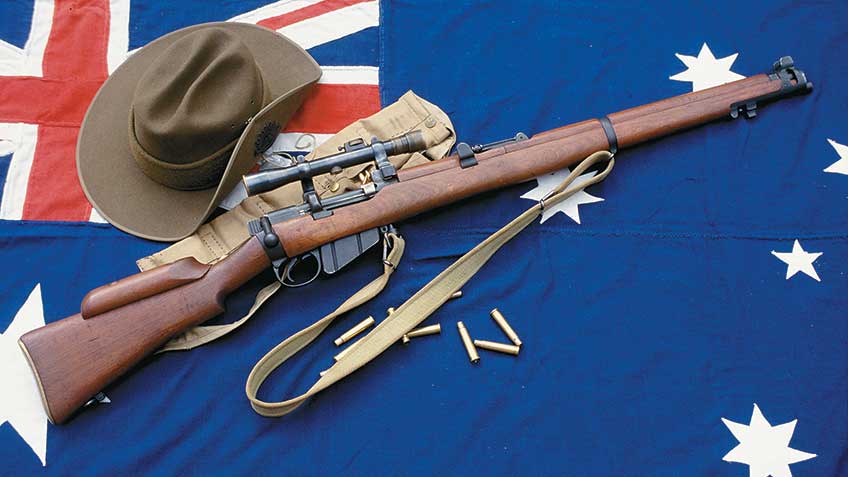

In the end, Winchester and Remington signed contracts to produce the. The urgency of the war led them to contact American manufacturers in a search for manufacturing capacity. 303-caliber P-13, which had been designated the Pattern 14 rifle. 276 caliber had been completed at the Royal Small Arms Factory Enfield, and the Brits had difficulty finding enough British capacity to produce the. 303 British cartridge, which was Britain’s standard service round at the time. But when the Great War started, Britain’s Select Committee decided to alter the P-13 to chamber the. The chain of events began when the British, in an effort to replace the SMLE as their main service rifle, began developing the Pattern 13 (P-13) rifle early in the 20th century and chambered it in a cartridge of. Stacking swivel: As was common with military battle rifles of the time, the front swivel is split and is used for stacking rifles, butt on the ground, together in the field. Reports vary as to exact numbers, but it’s estimated that three out of four rifles used by American forces in Europe were M1917s. Originally, it was never intended for the British-designed rifle to be used by American forces, but circumstances resulted in the gun being used in far greater numbers than the M1903. And, after use and experience with the gun, many doughboys stopped complaining. soldiers’ lives and took the lives of many of the enemy. It was also the tool that saved many U.S. Nevertheless, even with all the criticism, the M1917 served well. It then completed the cocking process when the bolt was closed.) In addition, it just didn’t seem right to many Americans that this foreign-designed rifle-which finished cocking upon closing the bolt, unlike that of the M1903 that cocked when the bolt handle was lifted to open it-be used by American forces.(Actually, the M1917’s dual-locking lug bolt’s striker partially cocked on opening the bolt. It also had a windage-adjustable rear sight, making it easier to zero (although some would argue that the M1917’s rear sight was tougher, as was the front sight both were protected by robust wings, or ears, to prevent dings or damage by rough handling in combat conditions). Pistol grip: Characteristic of British-designed rifles of the time, the pistol grip is modified or abbreviated compared to those of American design which, when a pistol grip was present, was more pronounced.įor one thing, the M1903 had a sleeker look. And, many in the military didn’t like it much, preferring the Springfield. military rifle-the M1903 Springfield-during that time period. Regardless of what it was called, it was issued to, and carried by, more U.S. “Enfield” most likely surfaced because it rolled off a soldier’s tongue easier than M1917 and because the P-14 on which it was based was designed by the Royal Small Arms Factory at Enfield Lock in England. To differentiate these two very similar guns, the P-17 name came into unofficial use. The term, “P-17,” was most likely coined by workers at Remington, Winchester and Eddystone, which were previously contracted to manufacture the P-14, Great Britain’s replacement for the Short Magazine Lee-Enfield (SMLE).

30 M1917,” but it was also known as the “Enfield” or “P-17”-both of which are technically incorrect (although many attached those nicknames to it). They were made by Winchester Repeating Arms Co., Remington Arms Company and the Eddystone Rifle Plant.The rifles were used due to a lack of M1903 and Krag service rifles.

30-06 Springfield, of the Pattern 1914 Enfield. It is an American modification, chambered.servicemen in WWI than the M1903 Springfield. The rifle was issued and carried by more U.S.How Did The Unique M1917 Make It Into U.S. The M1917 Enfield, or the “American Enfield”, was used in larger numbers than the official U.S.


 0 kommentar(er)
0 kommentar(er)
